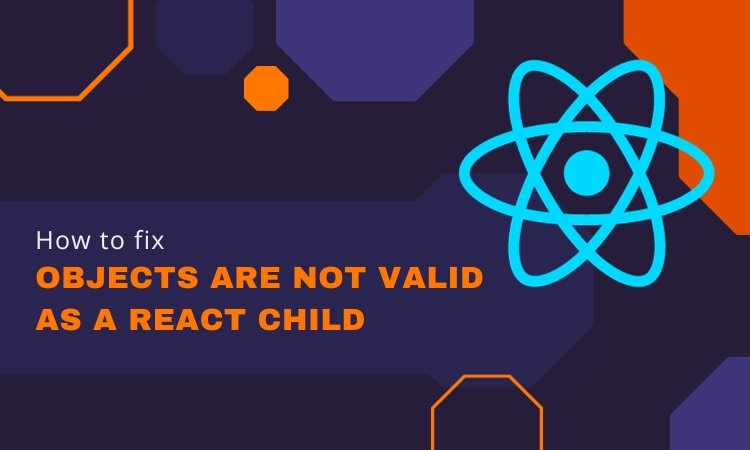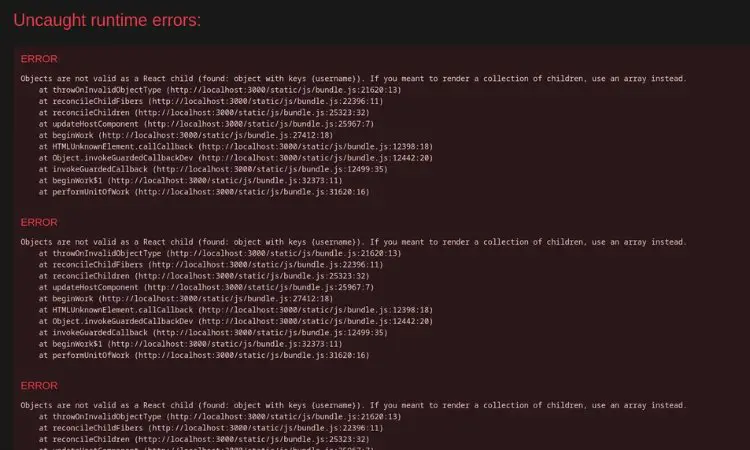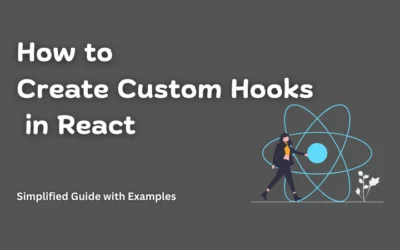Contents
What Causes the “Objects Are Not Valid as a React Child” Error?
The “Objects are not valid as a React Child” error typically occurs in React when attempting to render an object directly within the component’s JSX. React expects that children passed to a component are either valid React elements or strings. If an object is passed instead, React cannot render it directly and throws this error.
In React, components render and display data by composing a tree of elements, where each element represents a part of the user interface. These elements can be React components, HTML tags, or strings. When an object is encountered instead of a valid React child, React is unable to reconcile and render it appropriately.
To resolve this error, ensure that you are passing valid React elements or strings as children to your components. If you need to render content from an object, extract the necessary information and format it appropriately before passing it as a child. Additionally, consider using conditional rendering to handle different types of data that may be passed to the component.
1. Passing an Object as a Child
export default function App() {
return (
<div>
{{ username: "Coding Beast" }}
</div>
);
}
In the given instance, the App component attempts to display an object directly as a child element. This action leads to the emergence of the “Objects Are Not Valid as a React Child” error. React issues this error because it does not consider objects as acceptable child elements during the rendering process.
Passing Non-Serializable Data as a Child
export default function App() {
const user = { name: "Coding Beast!" };
return (
<div>
{user.name}
</div>
);
}
In the provided code snippet, the App component attempts to render a non-serializable data type (an object) as a child element. This action results in the activation of the “Objects Are Not Valid as a React Child” error, as React mandates that all child elements must be serializable.
Passing Array as a Child
export default function App() {
const developers = [
{ name: 'John', seniorityLevel: 5 },
{ name: 'Doe', seniorityLevel: 5 },
];
const office = {
state: 'Florida',
country: 'USA',
};
return (
<>
<div>
{developers.map((developer, index) => (
<div key={index}>
<span>{developer.name}</span>
<span>{developer.seniorityLevel}</span>
</div>
))}
</div>
<div>
<span>{office.state}, {office.country}</span>
</div>
</>
);
}
Within this code, there’s an array named “developers” and an object called “office” that we’re attempting to render as children. Nevertheless, it’s important to note that passing an array or object directly as a child is not permissible in React. Consequently, this code will result in the occurrence of the “Objects Are Not Valid as a React Child” error.
How To Fix the “Objects Are Not Valid as a React Child” Error
To address this error, it’s crucial to recognize that both arrays and objects are iterable in JavaScript. Despite arrays being a distinct type, JavaScript treats them as a special kind of object. Consequently, even if the problem originates from an array, the error message will still indicate “Objects Are Not Valid as a React Child.”
To extract data from an array or object, one can iterate through the array using a loop, access specific elements using their index numbers, or utilize dot notation for objects.
Below are several common solutions to this issue:
Converting Objects to Strings or Numbers
To address the error, you can convert the object to a string or number before passing it as a child. For instance:
export default function App() {
const user = { name: "Coding Beast" };
return (
<p>
{JSON.stringify(user)}
</p>
);
}
In this example, the JSON.stringify() method is used to convert the message object to a string, effectively preventing the occurrence of the “Objects Are Not Valid as a React Child” error.
Rendering Arrays Correctly With the map() Method
Another common cause of the error stems from incorrect array usage. If attempting to render an array directly as a child element, the “Objects Are Not Valid as a React Child” error is triggered. Instead, utilize the map() method to convert each item in the array to a valid React child element.
export default function App() {
const developers = [
{ name: 'John', seniorityLevel: 5 }, { name: 'Doe', seniorityLevel: 5 },
];
const office = {
state: 'Florida',
country: 'USA',
};
return (
<>
{developers.map((developer, index) => (
<div key={index}>
<span>{developer.name}</span>
<span>{developer.seniorityLevel}</span>
</div>
))}
<div>
{office.state}, {office.country}
</div>
</>
);
}
In this code, the map() method is employed to iterate over the developers array, converting each element into a div containing the developer’s name and seniority level. A key prop is also added to optimize rendering performance.
Using Conditional Rendering to Avoid Rendering Invalid Data Types
If passing data that might not be valid as a React child, conditional rendering can prevent the error:
function App() {
const user = { name: "Coding Beast" };
return (
<div>
{typeof user === 'string' ? user : null}
</div>
);
}
In this example, conditional rendering is employed to render the user only if it is a string, effectively averting the “Objects Are Not Valid as a React Child” error.
How to Prevent the “Objects Are Not Valid as a React Child” Error:
To proactively avoid encountering the “Objects Are Not Valid as a React Child” error, adhering to best practices during React component development is crucial. Key recommendations include:
- Always Pass Valid React Child Elements: Ensure that only valid React child elements, such as React components, HTML tags, or strings, are passed as children to components. This helps maintain compatibility with React’s rendering process.
- Avoid Passing Non-Serializable Data: Steer clear of passing non-serializable data types, such as objects or arrays, directly as children. If such data needs to be displayed, employ methods like converting objects to strings or numbers before rendering.
- Utilize Conditional Rendering for Edge Cases: Implement conditional rendering to gracefully handle edge cases and manage scenarios involving potentially invalid data types. This practice helps prevent the “Objects Are Not Valid as a React Child” error in situations where data may not conform to expected types.
Summary
In this discussion, we’ve explored effective strategies for resolving the “Objects Are Not Valid as a React Child” error in various scenarios. Additionally, we’ve highlighted best practices to preemptively mitigate the occurrence of this error in React component development.
A crucial takeaway is to be mindful that arrays are considered a specialized type of object. Failing to iterate through an array before rendering it in a React application can lead to the “Objects Are Not Valid as a React Child” error. By adhering to these best practices, developers can foster smoother rendering processes and enhance the robustness of their React applications.






0 Comments